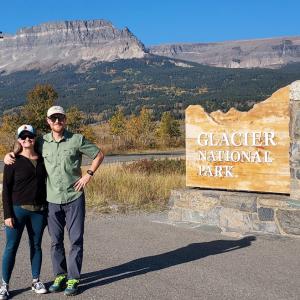Cross-Park Resist-Accept-Direct (RAD) Change Project
Date
In a time of climate change, the human element - agency context and rules, as well as emotions and values - influence how resource managers respond to environmental changes. The Cross-Park RAD (resist-accept-direct change) Project aims to increase understanding of how institutional and emotional factors influence manager decision making in the National Park Service in the face of ecological transformation. This project aims to create tailored, actionable products for park managers to support decision making, as well as contribute to emerging theory on the social science of ecological transformation in public land management. The goal is to use interviews and focus groups to study the culture and policy of individual parks, with case studies including Acadia National Park in Maine, Sequoia and Kings Canyon National Parks in California, North Cascades National Park in Washington state, and Glacier National Park and Confederated Salish and Kootenai Tribes in Montana.
Heather Yocum and Stefan Tangen, of the North Central CASC, visited with managers at Glacier National Park and the Confederated Salish and Kootenai Tribes in Montana this past October, to start this important process and collaborate with project partners to co-produce the next steps for the project. “It’s important to remember that environmental changes due to climate change are taking place in the context of ongoing management issues,” explained Heather Yocum. “Climate change is rarely the number one thing that managers are dealing with. The key is trying to understand how climate change and environmental change interact with or exacerbate other challenges.” The number of visitors to national parks increases each year - with Glacier seeing record visitation this past year - and all park staff have to pitch in to help implement a new reservation system to enter the park, stressing personnel and natural resources alike. The recently passed Infrastructure Bill has generated new funding to improve park infrastructure requiring vegetation ecologists and other staff to work with construction crews to reduce the ecological impact of these projects on the park. Additionally, the high cost of housing near the park makes it difficult to hire and retain staff. All of this strains existing staff and resources making it difficult to address the looming threats posed by climate change.
Both park managers at Glacier and resource managers at the Confederated Salish and Kootenai Tribes (CSKT) hope that working on this project will increase collaboration between them. In the past, resource managers at CSKT have worked with park managers to identify important cultural resources and they have collaborated with the US Forest Service to conserve and plant white bark pine, a keystone species of ecological importance. Park managers at Glacier have expressed interest in expanded collaboration with other Tribes, like the Blackfeet who live on the east side of the park, which already have a robust climate change program. “It’s really encouraging when federal resource managers are motivated to work with tribal partners,” added Stefan Tangen. “The reality is that CSKT and Blackfeet have been managing these resources and have been connected to this landscape for a very long time so it only makes sense to involve them in really consequential decisions. The big question is how do we actually do that? Hopefully this project helps figure that out.”
This winter, the project team will be conducting more interviews with park staff and Tribal members. Stay tuned for more updates from this in-progress 3-year project.


